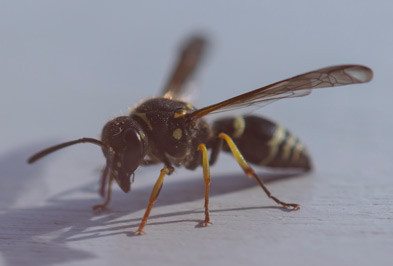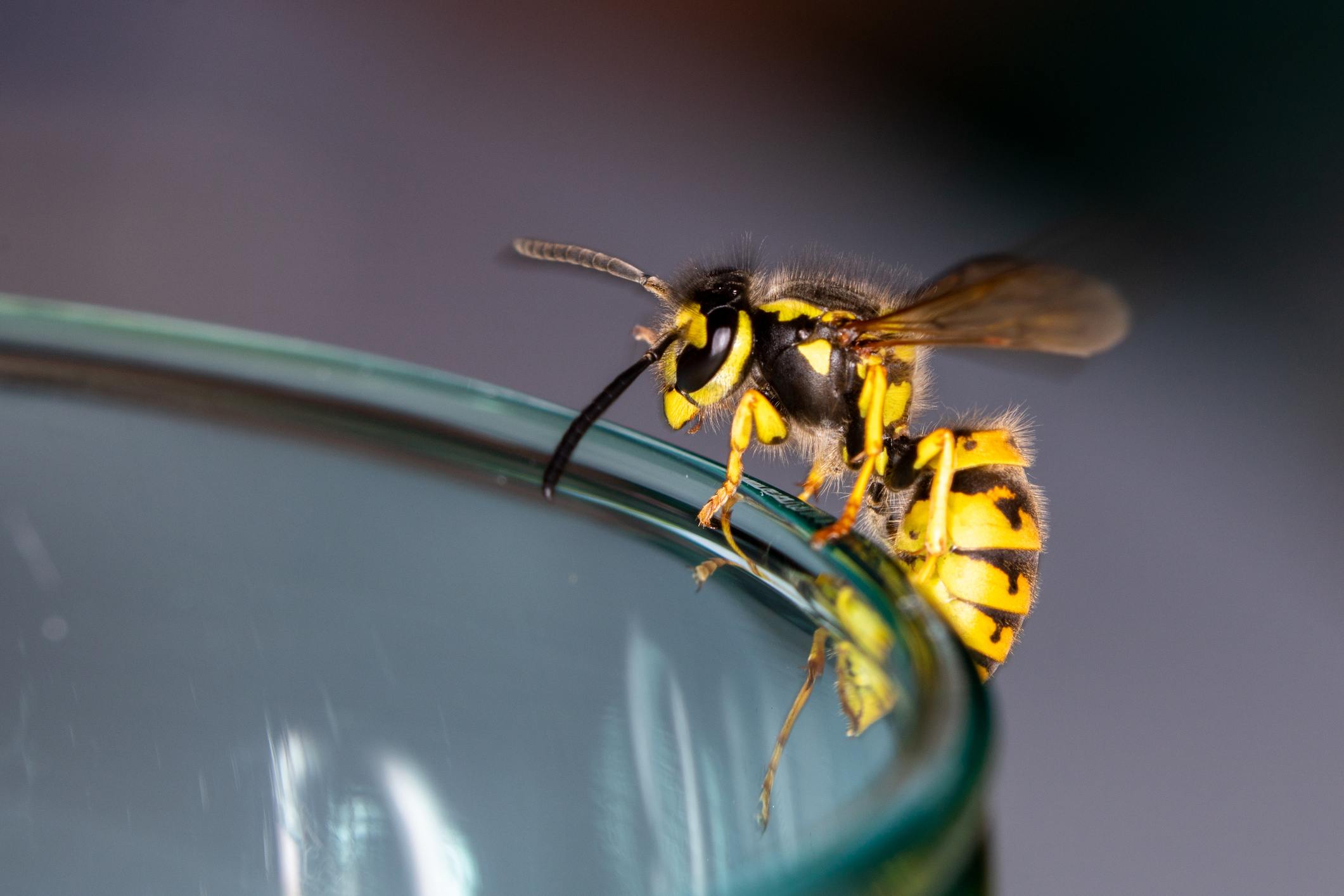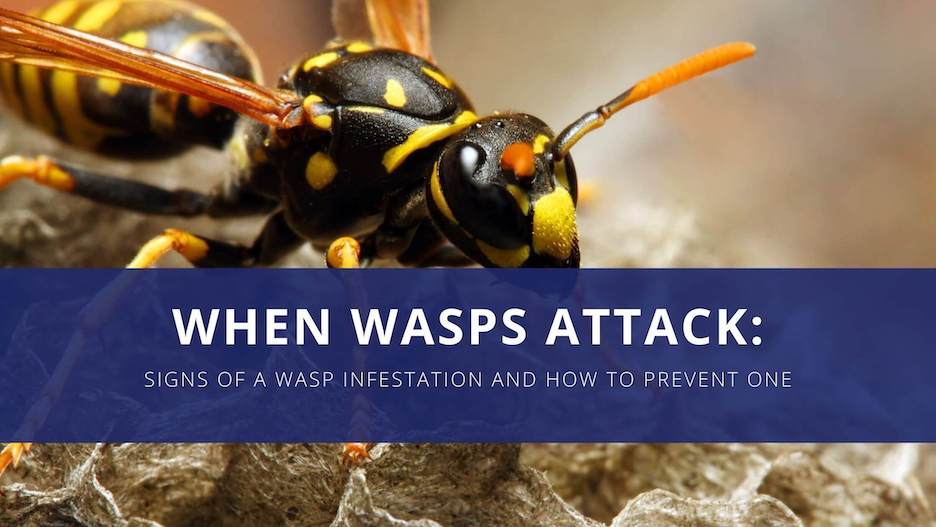What are stinging insects?
Stinging insects include all different species of bees, wasps and hornets. They are usually considered beneficial insects as they are pollinators of flowers and plants and some types of these insects can seek out and kill crop damaging pests. They build their nests in trees, shrubs and other protected places, as well as in man-made structures, including sheds, attics, under decks and in the eaves of a building. These insects belong to the family hymenoptera and these are just a few of the stinging insects you can expect to come across in Eau Claire,Milwaukee, Madison, and throughout Wisconsin in late July, August and September:
- Honey Bees– these stinging insects are about 1/2 an inch to 5/8 of an inch long and are banded with orange and brown or black and are mostly covered with pale hairs, especially on their thorax. They possess a barbed stinger which is lost in the victim when the victim is stung.
- Bumble bees– these bees measure from 1/2 to 1 inch long and are more full-bodied than honey bees. They have an overall ‘fuzzy’ appearance on the top of their abdomen and have broad bands of yellow and black. They also possess a barbed stinger, but they keep it when they sting their victim.
- Paper wasps– these insects measure from 3/4 to 1 inch long and can be many different colors depending on the species; including black, yellow, orange and brown with grayish colored wings. They look long-legged and possess a lance-like stinger that gives them the opportunity to repeatedly sting their victim.
- Yellow jackets– these insects measure between 3/8 to 3/4 inch long and have banded yellow and black abdomens, or white and black abdomens, depending on the species. They have shorter legs than and wider abdomens than paper wasps, but possess a similar stinger.
- Bald-faced hornets– despite their name, these insects are actually a type of wasp and they measure 5/8 to 7/8 inch in length and are usually black with a white pattern on their face and white stripes on their thorax. Their stinger is similar to that of the paper wasp and the yellow jacket.
Why do I have them?
There is really no specific reason you may have a stinging insect nest attached to your home or property other than these insects are opportunistic builders and have found a safe haven to create their nest in your backyard. They may be attracted to your flower or vegetable garden as well, but you can still find a population of these insects in areas without obvious attractants.
Are they dangerous?
Yes, stinging insects can prove to be dangerous to your health and the health of your family and your pets. Most stinging insects will not sting you unless they feel physically threatened, or you venture too close to their nest. Some of these insects have the capability to sting repeatedly, which can cause severe allergic reactions as well as Anaphylaxis in some people. Every year in the US, more than 40 deaths are caused by the resulting reaction from the sting of a bee, yellow jacket, wasp or hornet and it is believed that 10 out of every 100 adults has some kind of large and localized reaction to a sting. You may also not know you have an allergy to these insects until you get a multitude of stings, which may cause serious swelling, redness, pain and eventually shock.
How do I get rid of stinging insects?
Contacting a pest control professional in Wisconsin is the best way to get rid of stinging insects, because pest control professionals have the tools and the knowledge about these pests to make sure that they are removed from your property safely and without harm to you or your family. Our Home Protection Plan can help you keep stinging insects away from your home or business in Wisconsin.
Can I do it myself?
No. Getting rid of wasps, bees, and other stinging insects is not a task you should handle on your own. There are some Do-It-Yourself methods and products that you can buy at your local hardware store, but these are often ineffective and if they are handled or applied incorrectly, they can be extremely dangerous to your health and may have no effect on the stinging insects you are trying to get rid of. The best and safest way to get rid of stinging insects from your home or business is by contacting the professionals at Wil-Kil Pest Control in Eau Claire, Menomonee Falls, Appleton or Milwaukee.
How soon can you get here?
It is our goal at Wil-Kil Pest Control to assist you with your pest problem as quickly as possible so that you are caused no inconvenience. We want to make sure that your stinging insect problem is taken care of swiftly and safely and because of that, we will make every effort to be on your property to take care of your problem within the same day you call, or the very next day.
How can I prevent this in the future?
Unfortunately there is very little you can do to avoid stinging insects building their nests on your property. They build their nests randomly and there are no foolproof deterrents to keep these insects from returning to your property. You can keep a look-out for signs of nests in the places they like to build, like under eaves and decking, but there is nothing you can do to be sure they won’t build there. As soon as you become aware of a stinging insect nest, the best thing you can do is contact us, your local Milwaukee pest control professional, for immediate assistance in removing the nest. This is your best bet to keep your family and pets safe from coming into contact with potentially dangerous stinging insects.
Related Post From Our Blog
How to Get Rid of Wasps in the Winter
Spotting a wasp around your home can be alarming, especially during the winter season. Running across a wasp can also be an indication of more in the area. Some wasps survive the colder months by [...]
When Wasps Attack: Signs of a Wasp Infestation and How to Prevent One
Wasps are among the most intimidating stinging insects to encounter. While many bees can only sting you once, wasps can sting multiple times. Stings are painful, and can even trigger an allergic reaction. When you [...]
Bite- and Sting-Free Celebrations
For many of us, the outdoors has become an escape from day-to-day life as we try to find a new normal with COVID-19. Warm weather combined with the need for social distancing also means that [...]






